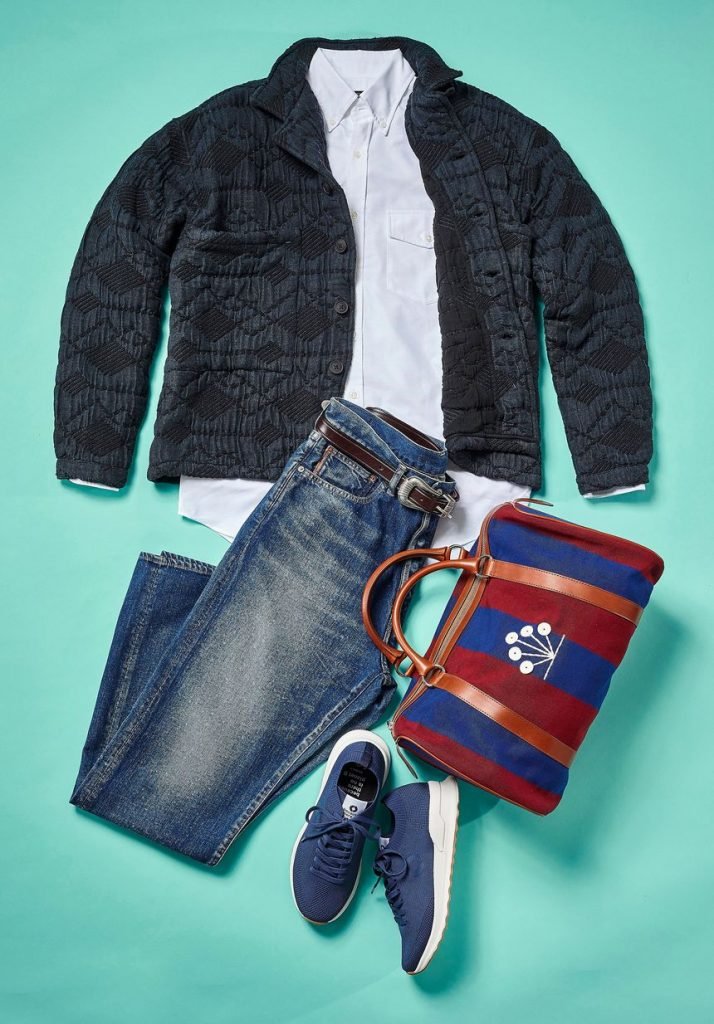Want menswear you can brag about? Consider this dress

“That’s a cool shirt.” , which is a straightforward statement that deserves a simple response, such as “Thank you”. But if you ask anyone who’s interested in clothes, the answer you’ll get is never straightforward. Instead, your distracted compliment will be met with a comprehensive fashion history. “Oh, this shirt? This shirt was spun in New Zealand from wool sheared from a rare breed of white sheep that was bred by seventh-generation shepherds and drinks only pure white.”
mansplainy’s answer is textbook. Chris Curran, store manager of Homme Essentials in Richmond, Virginia, says, “I disagree, but men think [fashion] is more practical than a form of self-expression.” For many men, in order to avoid appearing vain or wasteful, they have to [justify] the reason they have whatever they have. It’s not just “I like this color. It’s “This piece by Bode is hand-woven from recycled materials.”
Luke Raymond, senior menswear editor at luxury digital platform Farfetch, says these backstories have proven to be good business. “If a garment has a story, it will sell better than if it doesn’t.”
This desire for interesting clothing can create a playground for the unsuspecting – anyone over 30 will recall the false backstory of Hollister dating back to the early 20th century, even though the brand was actually founded by Abercrombie & Fitch in 2000. But there’s no mistaking wanting clothes with a (true) story attached. Mr. Raymond says instinct is doing some good. When a brand like Bode is more forthcoming about the provenance of its pieces, he says, it changes our perception of the potential longevity of clothes – and makes us want to cherish them longer, rather than abandon them when trends change.
If you have to know the name of the 72-year-old cobbler behind these cow-printed loafers to wear them, so be it. As long as they make you happy, maybe a little more fun. Here are six pieces you can brag about until your jaw hurts.

1.Jacket with a mountain of stories
Impressive craftsmanship reinforces the casual silhouette and comfortable textures offered by Antonio Ciongoli’s New York-based label 18 East. The brand aims to preserve old-fashioned production practices with garments like this jacket made by Indian artisans. The quilted geometric patterns are meant to evoke the mountains and lakes of Chittenden County, Vermont, where Mr. Ciongoli spent his childhood.

2.A well-thought-out shirt
For modern tailoring, New York menswear label J. Mueser sometimes uses vintage fabrics such as stale cotton, moleskin and linen. These vintage textiles are often found at flea markets and estate sales in Europe by Garret Miller, a customer and friend of the brand. with a focus on quality and craftsmanship, J. Mueser’s suits and shirts, including the cotton styles shown here, are handmade in Naples, Italy.

3.Historic denim
Cottle’s jeans are cut and sewn in Kojima, a coastal region of Japan that has long been home to master textile artisans. (If you visit, don’t miss Jeans Street, which is home to more than 30 different denim stores.) The company itself was only founded in 2015, but its team of artisans operates out of a 130-year-old textile mill. The indigo dye used in each pair of jeans is designed to replicate the shades of the first denim garments produced in Japan. The process of producing the jeans – which includes reinforcing the cotton threads with wax – can take up to six months from start to finish.

4.Sneakers from the sea
Like many other fashion brands, Ecoalf seeks to create a more circular economy where waste becomes the fuel for new products and efforts. The sneakers are made from marine yarn, which is spun from the fibers of discarded plastic water bottles. However, to find these thrown-away containers, the company did more than contact local recycling plants. It worked with 3,500 fishermen working in Spain, Greece, Italy and France to collect the bottles from the ocean floor.

5.A belt worth boasting about
Designed by designer Yuki Matsuda of Monitaly, the belt was made without electricity by members of the Pennsylvania Amish community. The combination of vegetable-tanned bridle leather and a delicate nickel buckle gives this belt a distinctly Western feel, like something a rancher might give you in lieu of a paycheck. That, and its handmade sincerity, attracted Clinton Chan, a 34-year-old engineer from Vancouver, B.C., to the accessory. “Before I bought the Monitaly belt, I would have looked for a cheaper alternative,” Chan says. But without the longevity and narrative promised by the Amish option, “they weren’t interested in me.”

6.Antique handbag
Farfetch’s Mr. Raymond said the New York-based brand Bode’s unique clothes are often made from vintage fabrics that “somehow allow customers to enter a world outside their own.” The striped cotton tote with embroidery and felt appliqués, for example, is made from fabrics inspired by those woven in Côte d’Ivoire shortly after independence from France in the 1960s.
